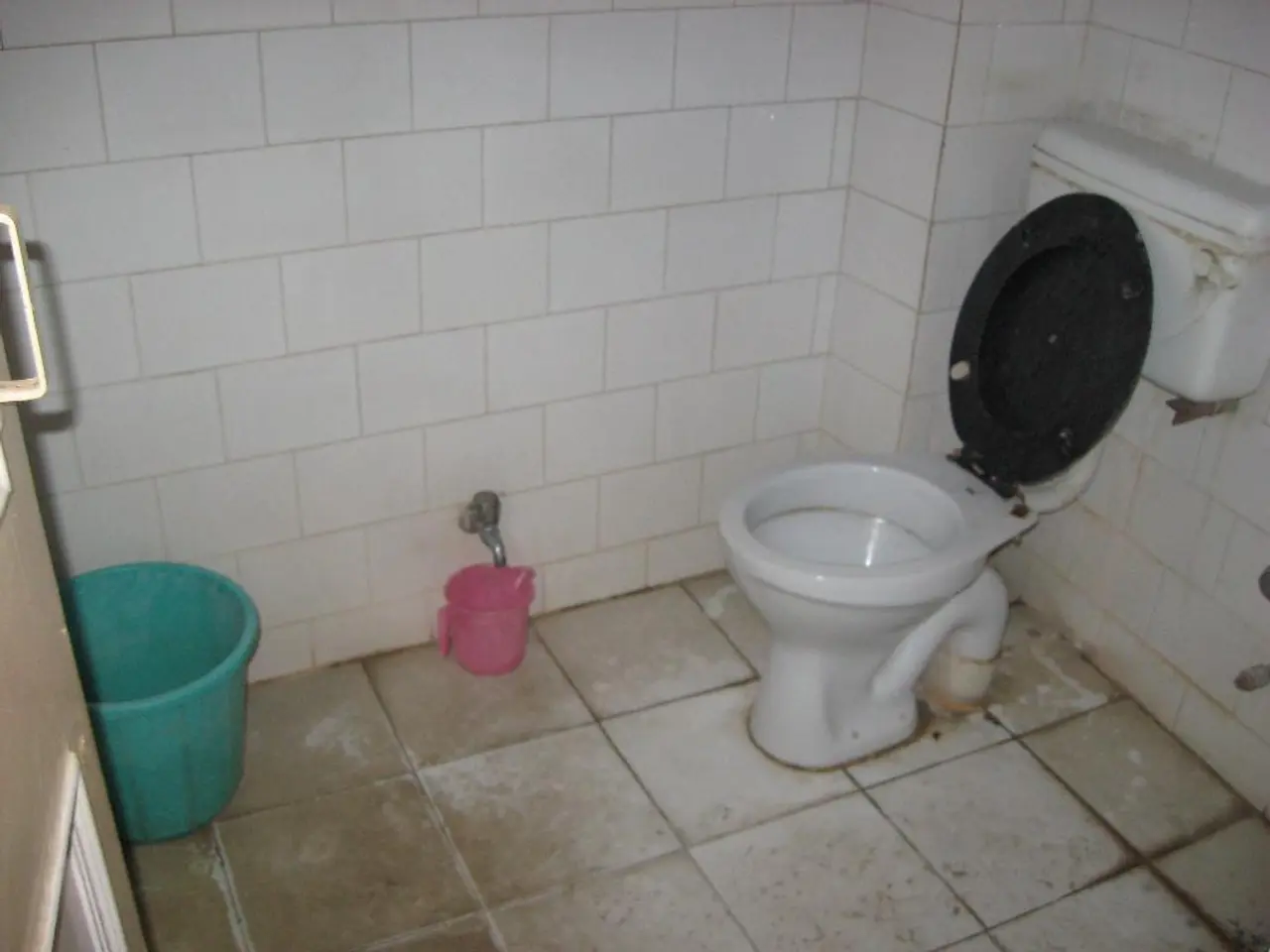"Tips for stopping a constantly running toilet and potential causes"
==============================================================
A running toilet can be a nuisance and a waste of water. In this article, we'll walk you through the common causes and solutions for a running toilet, using advice from plumbing expert David Cruz and bathroom expert Alex Woods.
A running toilet is often caused by one of the following issues: a worn or faulty flapper, an improperly adjusted float causing excessive water flow, or a defective fill valve. To identify and fix these problems, follow these steps:
- Adjust water flow and float level: Remove the tank lid and observe the water level after a flush. The water level should be about 1 inch below the overflow tube. If it's too high, adjust the float arm or float cup downward to reduce water flow and stop continuous running.
- Inspect the flush valve (flapper): A damaged or worn flapper fails to seal the flush valve properly, allowing water to leak into the toilet bowl continuously. Lift the flapper and check for cracks, warping, or residue buildup. If worn, replace the flapper with a compatible new one to ensure a tight seal.
- Clean the valve: Mineral deposits or debris can prevent the flapper or valve seat from sealing well. Clean the flapper and valve seat with a sponge or cloth to remove any buildup.
- Replace the flush valve if needed: If the flush valve itself is damaged or the flapper replacement does not fix the running, the entire flush valve assembly may need replacement. This involves draining the tank, removing the old valve, and installing a new one according to manufacturer instructions.
- Check and replace the fill valve: A malfunctioning fill valve can cause water to constantly flow. Inspect the fill valve for damage or debris, clean it as needed, or replace it if faulty. Adjust the fill valve height and float settings to stop overfilling.
If the float on the fill valve is sitting above the height of the overflow pipe, it will cause the cistern to overfill and water to run down the overflow and into the bowl. To fix this, locate the screw fitting on the end of the float arm and turn it to adjust the float height.
If the rubber seal at the base of the flush valve unit is deteriorating, it will need to be replaced. To replace it, turn off the water supply to the toilet, empty the cistern, and remove the old seal. Install the new seal following the manufacturer's instructions.
If the problem persists, it may be necessary to replace one or both valves. Replacing a flush valve unit is not too difficult and requires only a few tools and basic DIY knowledge. To reduce the water flow while investigating the issue, David recommends using an isolation valve like the Pipestation 15mm Isolation Valve from Amazon.
Alex Woods, a marketing manager at Victorian Plumbing, adds that if the float on the fill valve is sitting above the height of the overflow pipe, it will cause the cistern to overfill and water to run down the overflow and into the bowl.
David Cruz, a plumbing expert who has worked in the industry for over fifteen years, works closely with MyJobQuote to provide expert plumbing knowledge to homeowners, tradespeople, and news outlets. Alex Woods is a bathroom expert and marketing manager at Victorian Plumbing, a major online bathroom and kitchen retailer based in Merseyside, UK.
With these tips, you'll be well-equipped to tackle a running toilet and save water in your home. Happy fixing!
- The next home-and-garden project you undertake could be a bathroom renovation, such as replacing old flooring or updating the kitchen.
- Incorporating a new budget will be essential when building your home, considering the costs of materials like flooring and kitchen appliances.
- A running toilet might not seem like a major lifestyle concern, but it can lead to significant water waste over time.
- If you're embarking on a home improvement project, ensure you have the right tools—for instance, an isolation valve like the Pipestation 15mm Isolation Valve, which can help you isolate specific parts of your plumbing system.
- Replacing a worn flapper or a defective fill valve in your bathroom is more a DIY task than a professional one, saving you both time and money.




